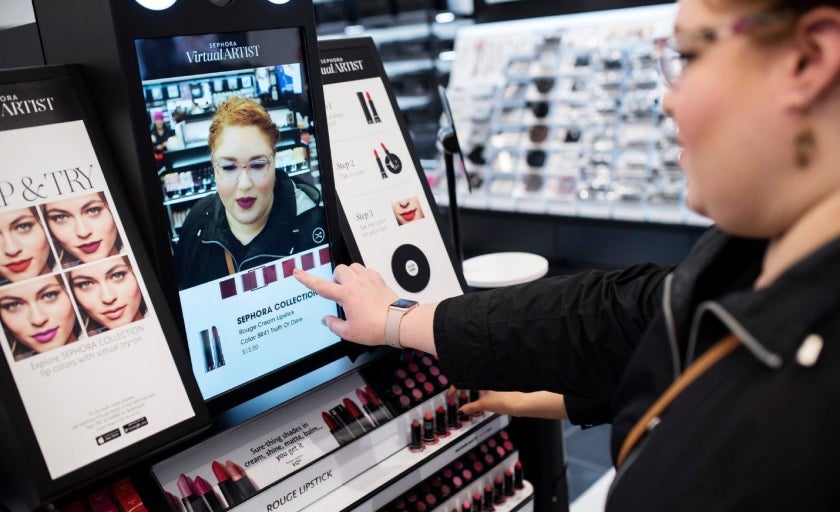

05.09.20236 mins read
As All human revealed in our All human Digital Pulse report, social commerce is quickly becoming the marketplace of choice for many shoppers. In fact, according to estimates, the global social commerce market will be valued at $2.4 trillion in 2023! Retailers must now contend with more locations, albeit virtual, where they must invest time and money.
This multiplication of shopping locations presents challenges for brands with a slew of customer touchpoints translating to an ever-changing and complex customer journey. And customers are looking for continuity,a uniform and seamless experience whether they are coming to you through Instagram, their local shopping centre, a mobile site, or a Google search.
While everyone agrees that omnichannel is the best way to future-proof your brand, that does not mean it is without its challenges.
I hear this complaint a lot. People may agree in principle that everyone is working on the same goal. However, the reality is that organisations often are pretty fragmented and insular. Internal structures and processes still follow older business models that saw channel delineations, separate P&Ls, and attribution models. It’s time to rethink and deconstruct that system.
Today is about getting marketing and your other teams to work together regardless of channel. By dismantling these departments and replacing them with integrated units based on customer lifetime value, you give your brand a better opportunity to see the customer journey as a single experience with multiple and varied touchpoints, some digital, some not. And with this understanding, you are better positioned to work on improving it with the assistance and expertise of your entire organisation.
Every interaction your customer has with your brand should feel the same. Whether in store, your app or utilizing social media for digital marketing, it doesn't matter. Today’s consumers expect the same experience in terms of feel, tone, and content.
This multi-customer experience (CX), whereby we are talking about various formats and desired outcomes, is complex, and it falls on each brand to find cohesion and join it all together.
One area ripe for change is content. We must no longer think of delivering for one platform or medium but look at content that can be manipulated and used for every platform. From AI speakers like Amazon Echo and Google Home to the local shopping centre, brands must remember that customers are finding out about their products in various places and must be sure to present a unified experience.

Omnichannel does offer brands a huge opportunity for lowering operational costs. However, with so many locations to master and manage, there is also a potential for waste, inefficiencies, and a poor CX if there are stock issues preventing purchase.
Brands must ensure that each of these areas are managed. Again, the key is to have a 360° view, to see all the various channels as part of a whole rather than individual sectors or channels, and then plan collectively.
Customers now expect personalised experiences, particularly in the digital world. Businesses are responding by using data analytics to provide personalised product recommendations and targeted marketing campaigns - but ensuring that it is delivered across multiple platforms, with user consent, and also in-store is quite a herculean task.
And it’s a job getting harder to achieve as more data restrictions and regulations are imposed.
Omnichannel retail requires businesses to integrate data from multiple sources, including point-of-sale systems, eCommerce platforms, and social media. Apart from any governance concerns, there are also logistics. Data is often stored in different formats and requires different levels of security. Choosing the right technology for this is in itself an issue, and then, of course, there may be the issue of dealing with existing legacy systems not optimised for omnichannel.
Plus, with so much data being exchanged across multiple channels, businesses must keep customer data secure. This requires robust security measures and compliance with data protection regulations
Overseeing inventory across multiple channels can be complex and time-consuming. However, as mentioned earlier, availability issues will lead to a negative CX and lower retention and loyalty. Businesses must ensure they have real-time visibility into inventory levels to avoid delays, stockouts, and overstocking.

Again, the challenge is the volume and variety inherent in omnichannel retail. With so many channels to manage, businesses must provide consistent customer service across all touchpoints. Customers also typically will have different expectations for each channel; they may not expect 24/7 availability with a person at a shop but will expect that online.
We know from the All human Digital Pulse that although generally, people are happy with the level of online customer service, only 14% are very happy. This tells me that there is ample scope for brands to improve and could use tools such as chatbots, AI, live chat, and instant messaging to meet customer needs.
Omnichannel retail requires a flexible and responsive supply chain that can quickly adapt to changes in demand. However, the truth is that supply chain partners often have different capabilities and lead times, and how much control you have over this varies.

With an ever-crowded digital marketplace and the rising popularity of direct-to-consumer (DTC), brands now must ask how they can continue attracting customers. All brands are looking for that new tech, that breakthrough game-changing tool or innovation that sees them rise above the competition and get noticed.
If the emphasis is very much on the experience part and listening to various retailers at conferences such as this year’s GDS retail summit, it is- then it’s time for brands to start paying attention to their audiences.
And I mean really paying attention. Not making judgments based on a hunch or intuition or buyer profiles created previously- but actually taking the time and money to invest in serious research to discover what their audience wants and needs.
And then it is about becoming obsessed with delivering the customer experience their customers are actually seeking and expecting. And this may mean having a different approach depending on the channel or the cohort- but it is about adopting an obsessional attitude toward a person’s experience with your brand.
While there are many advantages to being an early adopter of the latest tech, sometimes it can misfire. A few years back, everyone was talking about augmented reality (AR) and virtual reality (VR). While we’ve come a long way since then, they have not infiltrated the shopping experience as much as was predicted. Sometimes, people just want tactile reality.
Yes, there is a place for smart mirrors or digital printing, but unless you know what your customer wants, you may end up spending large swathes of money on technology that, although it enhances the CX, fails to meet your customer’s primary needs or desires.
All human has long been big advocates for primary research. Our Experience Design Director, Fergal Lawler, explores this in greater detail in Research feeds insight and insight drives success. The main point is that simply applying the latest trends or assumptions without first analysing your target audience is the wrong approach.
Brands must study and examine the feedback to understand what their customers want and their priorities or motivators at a granular level when purchasing and then take these insights and apply them. And worryingly, it is this last step that is where we see the ball getting dropped the most. Making changes based on consumer feedback can be a tough sell, as organisations can resist doing things differently or properly investing in proprietary research. However, failure to implement the findings from your customer research could result in misaligned and unsatisfactory customer experiences and missed opportunities for savings and growth.
Something often overlooked by brands is the final leg of the journey- the receipt of the item into the customer’s hands, aka ‘The last mile’. There is an argument, quite a hefty one, that it is the most critical and potentially most problematic part of the customer’s experience with your brand. It is, however, inexplicably often overlooked by many organisations that view the buying journey as complete once payment is received. This is a mistake. For shoppers, it ends when they have the goods or services in their possession and is a critical CX event. I will address the many issues synonymous with this order fulfilment another day; it is too complex to get into here, but suffice it to say brands must prioritise the last mile to ensure customer satisfaction and build loyalty. And it’s why we are currently undertaking a significant project to ask online shoppers what their attitude is toward the last mile and how they feel about the current services offered. Stay tuned for more on this…
Sephora's omnichannel strategy includes a mobile App, in-store technology, and a loyalty program that allows customers to earn points and redeem rewards across channels.

Marriott's mobile App allows guests to check in, make room requests, and access hotel information, providing a seamless experience across channels before and after they arrive at the hotel
Kaiser Permanente's ‘My Health Manager’ App allows patients to schedule appointments, view test results, and communicate with their healthcare providers, improving the patient experience and increasing engagement.

Interested in improving your brand's omnichannel presence? Read about what matters most to online shoppers in our Digital Pulse Report.


